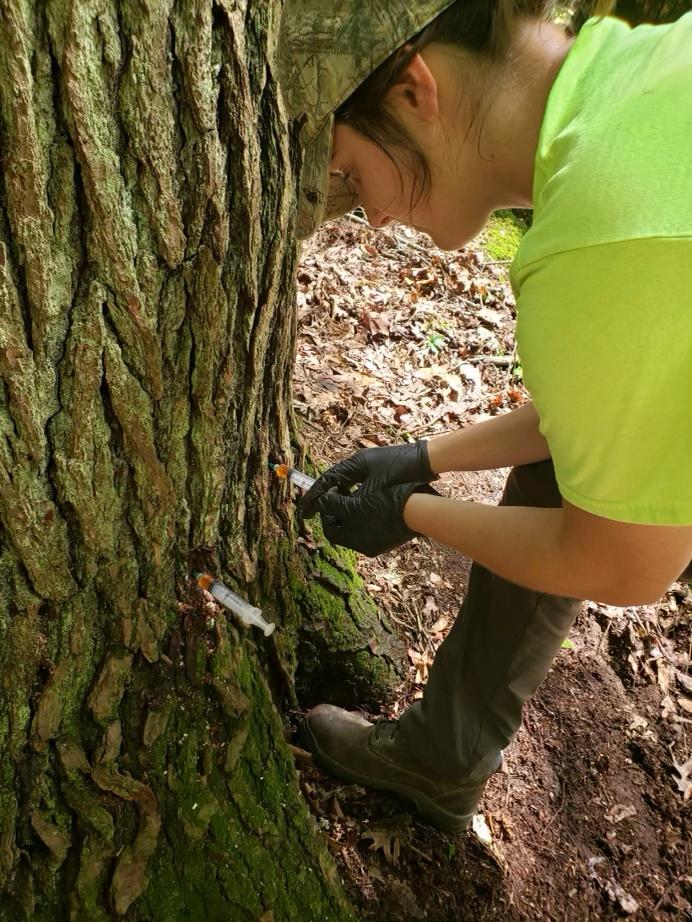AN UPDATE ON TREATMENT FOR THE HEMLOCK WOOLLY ADELGID AT CLEAR CREEK METRO PARK
Staff and volunteers were able to tag over 6,000 hemlock trees in two separate areas of Clear Creek Metro Park this past spring. Both stands had evidence of infestation by Hemlock Woolly Adelgid (HWA) and will be the priority treatment areas.
Teams went into the hemlock stands and measured each hemlock and gave it a unique code to tag the tree. The tree’s diameter at breast height, or DBH, was taken and recorded. This measurement will determine how much chemical the tree will be receiving. Other factors, including distance to water and ground conditions will help determine the type of chemical treatment to use.
Two different treatment methods will be used. One is the injection method. Syringes with a calculated amount of chemical is inserted around the base of the tree. The chemical is slowly injected into the tree where it will be distributed into the canopy by the tree’s circulation.
The second method is soil application, where the chemical is sprayed into the soil around the base of the tree and the roots will take it up. Both methods distribute the pesticide throughout the tree. Adelgids will ingest the pesticide when they are feeding on the hemlock. Treatments can last up to five years, giving the tree protection from the future infestations.
In the coming months, staff and volunteers will treat as many trees as possible. We will also continue to monitor for the occurrence of HWA in the winter months and adjust our treatment efforts as well.


now that is really cool. I never thought about giving a tree a shot! Thank you for all you do for Mother Nature and for keeping the Metro Parks well and healthy. (I love them and visit one or two different ones each week). NOTHING like them anywhere in the US that I am aware of (and I have lived in a lot of metro areas in my life).
two questions:
how does the insecticide affect woodpeckers or other predators that eat insects off the trees?
and how can I get to be a volunteer on this project?
Hello Rebecca – We use imidacloprid either by soil drench or truncated injection. We use at the labeled rates which is not toxic to birds or mammals that dine on the insects of treated trees.
Clear Creek Metro Park has a volunteer team that surveys hemlock stands for HWA. For information on how you can join the volunteer team, please contact the park naturalist, Katie Bennett: klbennett@metroparks.net